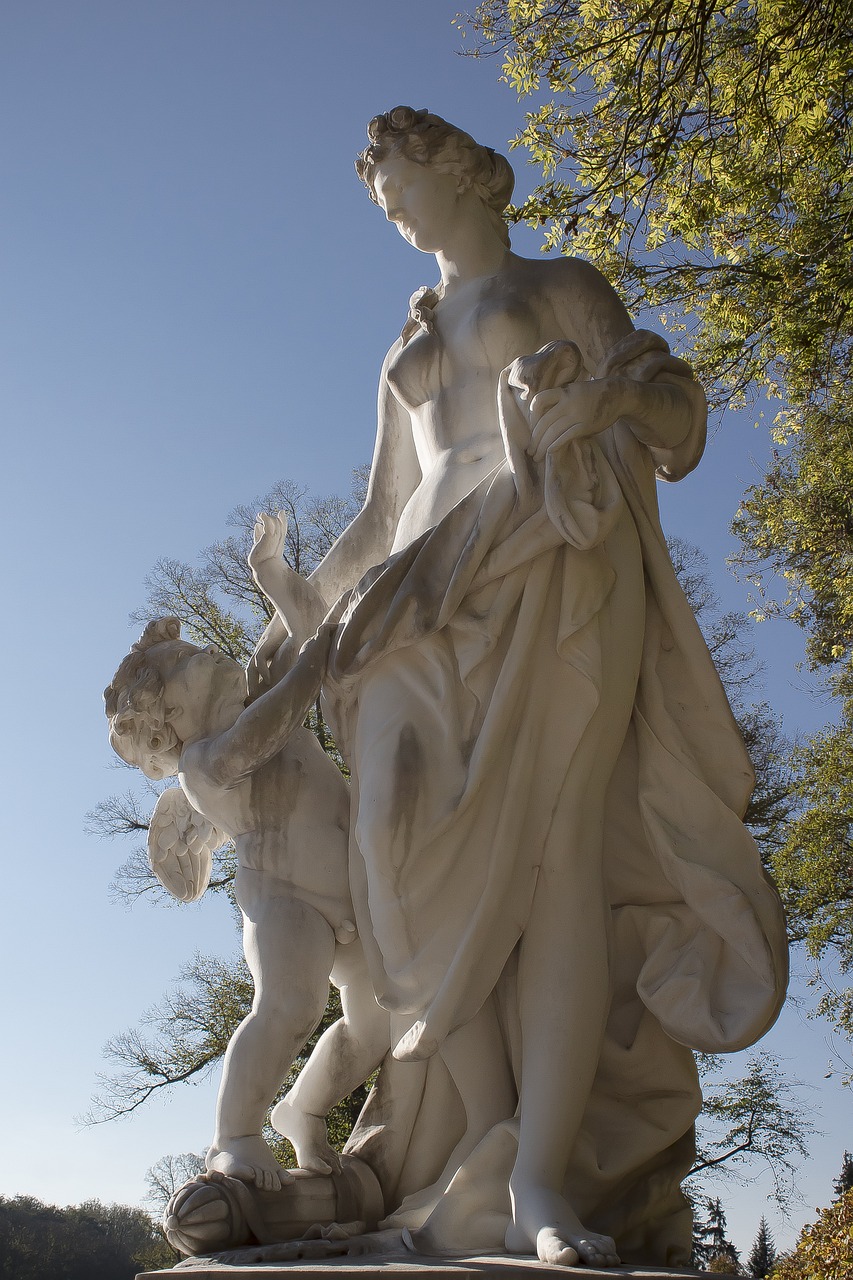Overview of Venus: The Roman Goddess of Love
Venus, the Roman embodiment of love, maternal care, sexual reproduction, and desire, was revered as one of the most beautiful deities in the Roman pantheon. Renowned for her ability to attract both mortals and gods, she exhibited a fluid approach to sexuality, captivating both male and female lovers. In addition to her role as a protector of lovers and sex workers, she became a significant figure within Roman religious practices. Venus, borrowed from the Greek goddess Aphrodite, shared numerous mythological ties and cultural attributes with her.
Etymology
The term “Venus” was derived from the classical Latin noun indicating “love,” specifically relating to romantic or sexual desire. This term was also linked to the verb “venerari,” signifying “to love or show reverence.” There are theories suggesting that the name may also relate to “venenum,” meaning “poison” or “charm,” which could allude to Venus’s reputed influence over passions.
Venus was recognized through various epithets, each corresponding to her different aspects. She was known as “Venus Caelestis” or “Heavenly Venus,” and “Venus Felicis,” which reflected her association with fortune in battles. Other names included “Venus Genetrix,” for her role in the birth of the Roman state, and “Venus Victrix,” identifying her as the bringer of victory.
Attributes
As the deity of love, Venus wielded the power to ignite passion in both divine beings and mortals. Her allure was often accompanied by symbols like the rose—alluding to fertility and desire—and a crown of myrtle, further emphasizing her connection to love. Seashells frequently appeared in her depictions, symbolizing her emergence from the sea, encapsulating both beauty and erotic connotations.
Family Relations
Venus’s origins are steeped in extraordinary lore, as she lacked traditional parents. In myth, her father was Uranus, while her mother represented the sea—symbolizing feminine essence. Within her narrative, Venus was wed to Vulcan, the god of fire and craftsmanship, yet their relationship was plagued with infidelity and produced no offspring.
Her primary consort was Mars, the god of war, with whom she bore numerous children embodying various aspects of love and fear. Notably, she had a significant son, Aeneas, with the mortal Anchises, a figure of pivotal importance in Roman lineage.
Mythological Tales
Venus’s narrative includes unconventional beginnings; she was born from the sea foam that emerged when Saturn severed Uranus’s genitals. This dramatic inception is frequently illustrated in art, depicting her rising from a shell.
Despite her marriage to Vulcan, Venus’s affections strayed frequently, most famously toward Mars. Their relationship became a point of contention, especially when Mercury discovered their affair and informed Vulcan, leading to an infamous trap laid by Vulcan to ensnare the lovers.
In addition to her trysts with Mars, Venus developed a passionate, albeit tragic, relationship with the mortal Adonis. Despite her warnings of lurking dangers, Adonis met his demise at the hands of a wild boar, prompting a profound expression of grief from Venus. The anemone flower, which flourished from his blood, symbolized both beauty and transience.
Venus in the Aeneid
In mythology, particularly as described in Virgil’s “Aeneid,” Venus played a critical role as Aeneas’s divine parent. After disguising herself to seduce Anchises, she bore Aeneas, who was destined to create a great empire. Throughout Aeneas’s tumultuous journey, Venus acted as a staunch ally, intervening on several occasions to protect him from adversities instigated by Juno.
Her protective nature was evident when she assisted Aeneas by providing him with divine armor created by Vulcan himself, showcasing Aeneas’s importance in establishing Roman glory.
Venus and Roman Religion
Incorporated into state religion in the early third century BCE, Venus was worshiped during pivotal historical events like the Punic Wars. Temples were dedicated to her, with legendary claims emerging that connected significant Roman figures, like Julius Caesar, to her lineage.
Three main festivals in her honor were celebrated annually, highlighting her dual nature as a provider of love and protector of prosperity within the Roman context.
Contemporary Representation
In modern times, Venus persists as an enduring symbol of beauty and desire in popular culture. Her influence stretches across advertising and entertainment, with her name featuring in various brands and productions, signifying love and erotic allure. From films to songs, the figure of Venus continues to inspire, epitomizing the complexities of love and desire in contemporary society.



